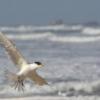-
Posts
9,502 -
Joined
-
Last visited
Content Type
Profiles
Forums
Gallery
Events
Everything posted by Jim Lad
-
That's funny, Nils - in English it's also called a 'telemotor'. John
- 2,625 replies
-
- kaiser wilhelm der grosse
- passenger steamer
-
(and 1 more)
Tagged with:
-
She's coming along beautifully, Gil! John
- 60 replies
-
- dragon class
- billing boats
-
(and 2 more)
Tagged with:
-
More delightful work, Nils. Just for your information, the platform above the bridge is called the 'monkey island' in English! John
- 2,625 replies
-
- kaiser wilhelm der grosse
- passenger steamer
-
(and 1 more)
Tagged with:
-
You do more in a day than I do in a week, mate! John
- 453 replies
-
- thermopylae
- sergal
-
(and 1 more)
Tagged with:
-
A very nice job on the stern, Dan. John
- 287 replies
-
- michelangelo
- ocean liner
-
(and 1 more)
Tagged with:
-
G'day Richard, and a warm welcome to the forum. Always good to see another Aussie here. John
-
That's a huge project you've undertaken, but it will be a lasting memorial to your grandfather. John
- 53 replies
-
- clipper
- restoration
-
(and 1 more)
Tagged with:
-
Very nice, Nils. Your telegraphs are actually set on 'slow ahead' - the bridge telegraphs are marked in the opposite way to the repeaters in the engine room! John
- 2,625 replies
-
- kaiser wilhelm der grosse
- passenger steamer
-
(and 1 more)
Tagged with:
-
Not my model, Mark, but I think if it was I might be inclined to leave to holly in if it looks good. John
-
Nice to see that you've got stuck into another one, Jason. She really looks a treat. John
- 13 replies
-
I usually do just that - lower masts starting from forward and then work aft and up, however don't make this an invariable rule. Study your rigging very carefully before you start as there may be peculiarities on your particular ship that necessitate a variation to the norm. John
-
Popeye - WARNING! Those whisker booms will catch on everything within 50 yards of the model!!! Be very careful when working anywhere near the forward end of the model! John
- 453 replies
-
- thermopylae
- sergal
-
(and 1 more)
Tagged with:
-
Coming along very nicely, Nils! The whole model is most impressive! John
- 2,625 replies
-
- kaiser wilhelm der grosse
- passenger steamer
-
(and 1 more)
Tagged with:
-
Just had another thought, Pat (I have some occasionally)! Late 19th/early 20th century sailing ships often had bullseye fairleads lashed to the shrouds to lead some of the light running rigging from aloft to the pin rail. Is that, perhaps, what he's talking about? John
-
Welcome home! John
-
First time I've come across the expression, Pat. I'll be interested to see what information people have on this. John
About us
Modelshipworld - Advancing Ship Modeling through Research
SSL Secured
Your security is important for us so this Website is SSL-Secured
NRG Mailing Address
Nautical Research Guild
237 South Lincoln Street
Westmont IL, 60559-1917
Model Ship World ® and the MSW logo are Registered Trademarks, and belong to the Nautical Research Guild (United States Patent and Trademark Office: No. 6,929,264 & No. 6,929,274, registered Dec. 20, 2022)
Helpful Links
About the NRG
If you enjoy building ship models that are historically accurate as well as beautiful, then The Nautical Research Guild (NRG) is just right for you.
The Guild is a non-profit educational organization whose mission is to “Advance Ship Modeling Through Research”. We provide support to our members in their efforts to raise the quality of their model ships.
The Nautical Research Guild has published our world-renowned quarterly magazine, The Nautical Research Journal, since 1955. The pages of the Journal are full of articles by accomplished ship modelers who show you how they create those exquisite details on their models, and by maritime historians who show you the correct details to build. The Journal is available in both print and digital editions. Go to the NRG web site (www.thenrg.org) to download a complimentary digital copy of the Journal. The NRG also publishes plan sets, books and compilations of back issues of the Journal and the former Ships in Scale and Model Ship Builder magazines.



